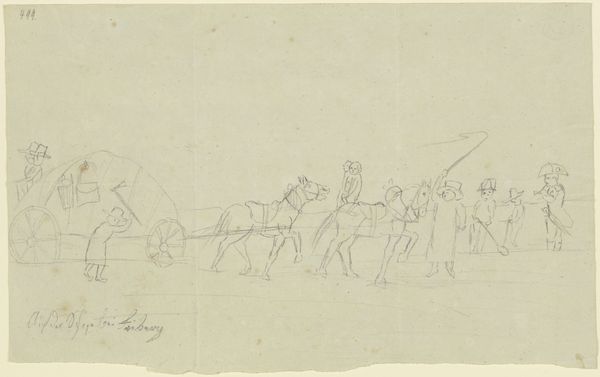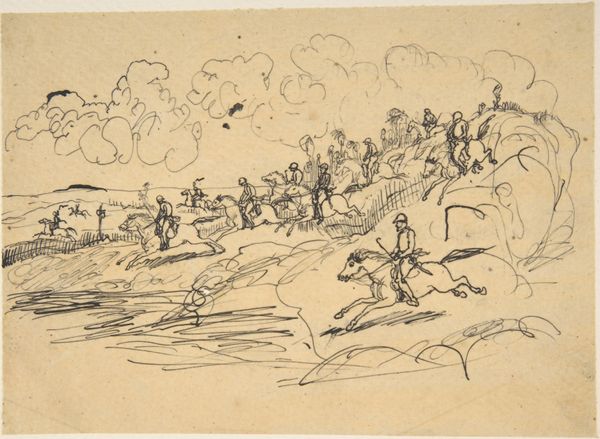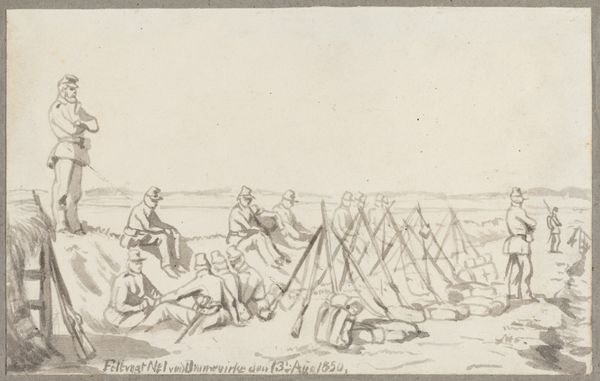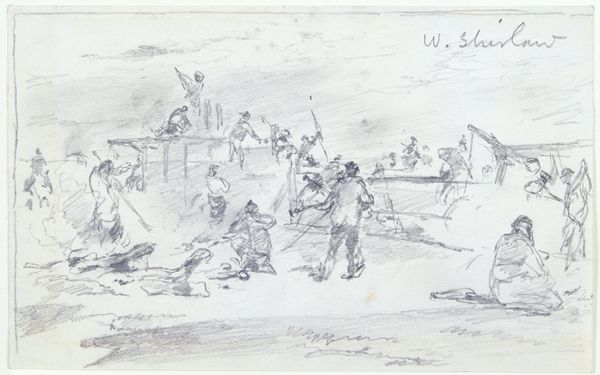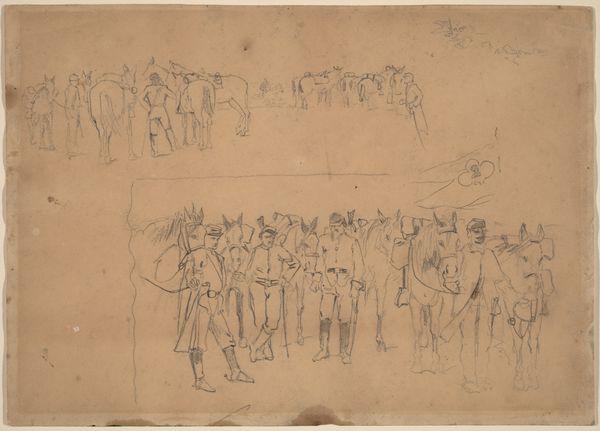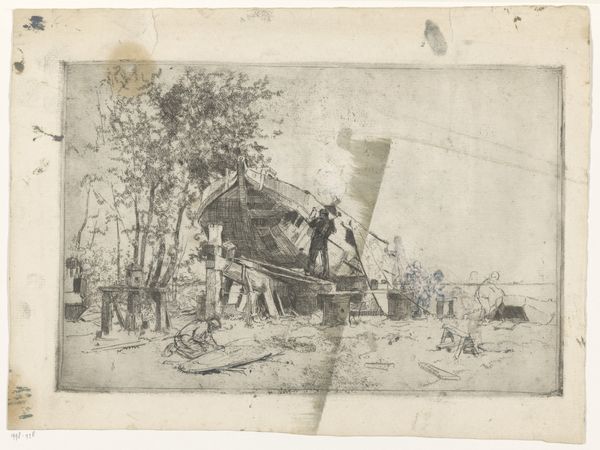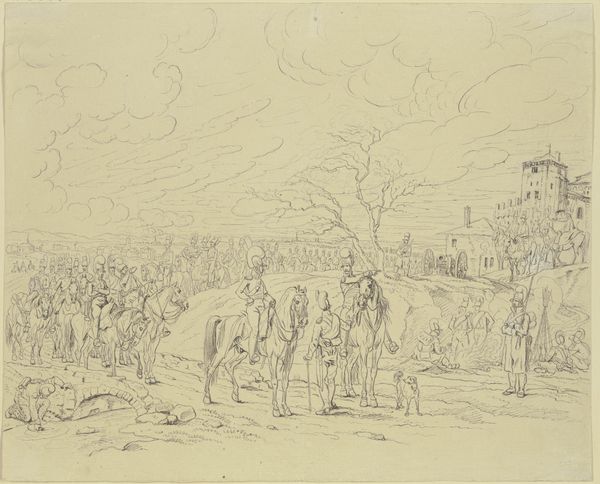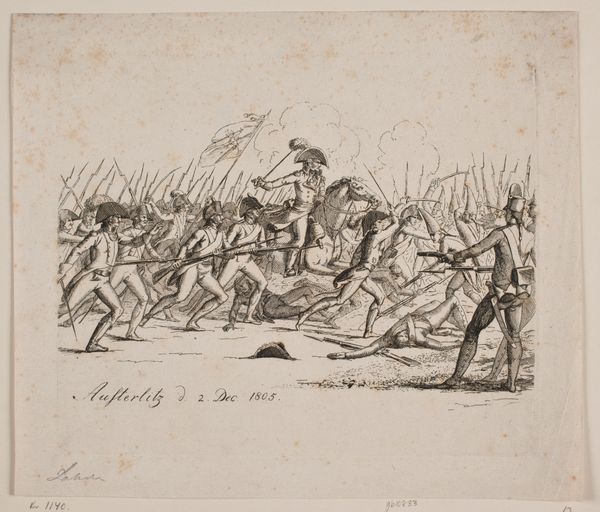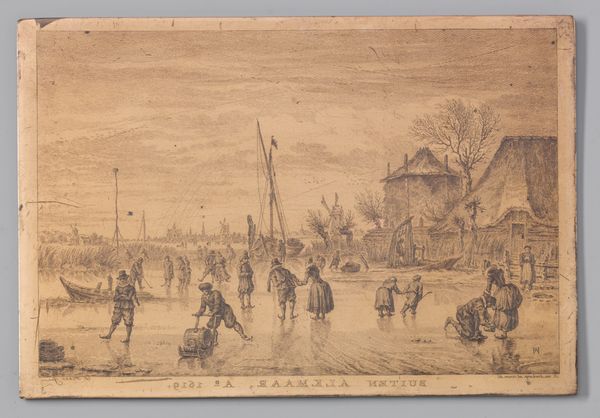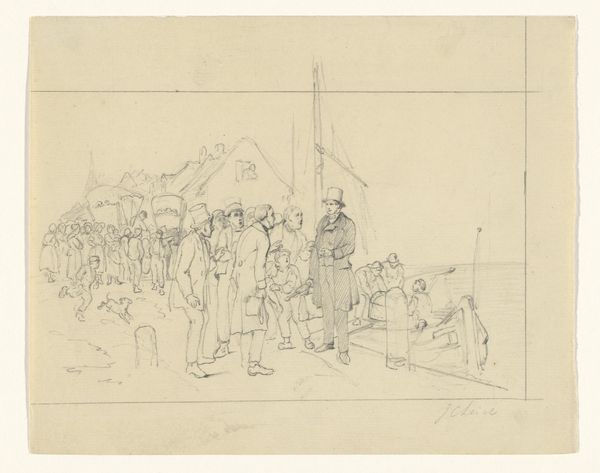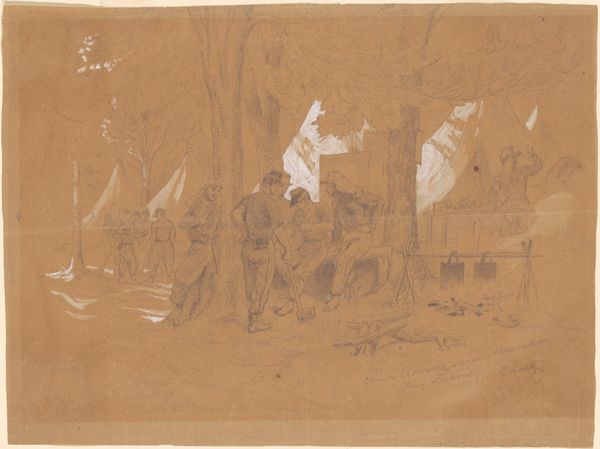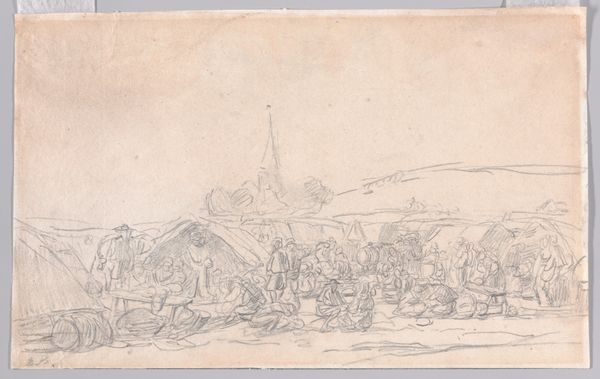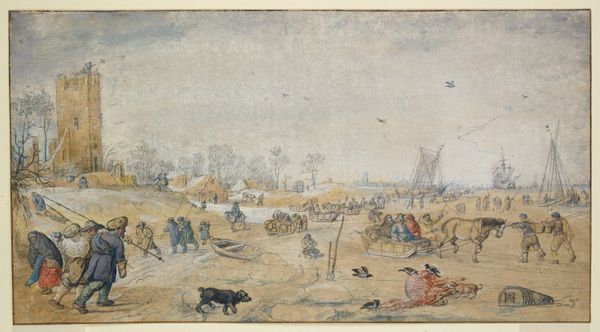
drawing, pencil
#
drawing
#
landscape
#
figuration
#
pencil
#
history-painting
Dimensions: sheet: 26.2 × 45.6 cm (10 5/16 × 17 15/16 in.)
Copyright: National Gallery of Art: CC0 1.0
Editor: Winslow Homer’s “Advance of the Skirmish Line,” created in 1864, is a compelling pencil drawing. The sketched quality lends a feeling of immediacy and vulnerability to the figures, doesn't it? How do you interpret this work in the context of its time? Curator: This drawing, created during the Civil War, offers a lens through which to examine the socio-political complexities of that era, and even today. The advance, rendered with a rawness in Homer's quick strokes, reveals not a glorious charge but rather the grueling, often dehumanizing reality of warfare. Note the landscape: scarred and barren. What does this suggest to you? Editor: It looks devastated…almost like the land itself is a victim. It’s definitely not heroic or romanticized like some historical paintings. Curator: Precisely. And that subversion of heroism is critical. Consider the power structures at play. Homer is showing us the foot soldiers, not the generals in their war rooms. Whose stories usually get told, and whose are erased? Editor: Usually the powerful get to control the narrative, right? Curator: Exactly. Homer is implicitly challenging the dominant narratives surrounding war. He seems to be emphasizing the shared humanity, or perhaps more accurately, the shared *inhumanity* inflicted upon those directly involved in the fighting. We could even discuss the almost identical appearance of each soldier, highlighting the de-individualization and the effects of conflict on society's most vulnerable. Does that shift your initial reading at all? Editor: Yes, definitely. I was initially just seeing a landscape with figures. Now I see it as a statement about the impact of war on the individual and the land. It feels less like a historical record and more like a critique. Curator: I'm glad we’ve been able to unpack that a bit! Recognizing how art intersects with social and political forces allows us to engage more critically with the narratives we inherit and those we choose to create.
Comments
No comments
Be the first to comment and join the conversation on the ultimate creative platform.
